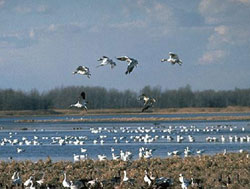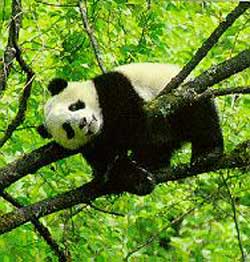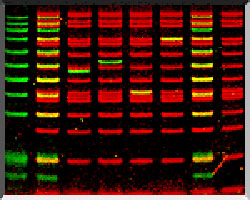Birdwatchers and ornithologists are not at all the same. To the
latter, everything about birds is of interest - how they migrate,
where they breed, or what they eat. Birdwatchers have a single concern,
which is to see as many kinds as they can. Once seen, as soon forgotten,
or, at least, ticked off and added to the Life List that is the
basis of their self-esteem.
I went through the same phase. After the usual interest in stamps
and an eccentric deviation into cheese labels, I was given a pair
of binoculars. At the age of twelve I eavesdropped on a group of
excited amateurs (twitchers, as they call themselves nowadays) as
they peered at some gulls bobbing, on a dim winter day, on the then
filthy waters of the River Mersey. All agreed: one of the birds
was not an ordinary herring gull, but the much scarcer glaucous
gull, seldom seen so far south. My problem was that I could not
see any difference. A member of the flock was a rarity, but which
was it? Did it count? Could I check the box in my bird book? It
was my introduction to the ethics of science. I admit it: I made
the tick, but then I rubbed it out.
Twitchers, like scientists, belong to a fellowship of faith. They
play cards against Nature. It is possible to win every time by faking
one's hand, but to do so removes the point of the game. That is
the strength of science, and its greatest weakness. Without collective
trust it could not work. Instead there would be the dismal apparatus
of mutual suspicion familiar to every accountant.
Birding is refreshingly free from fraud. It has had its scandals,
such as the notorious case of the Hastings Rarities (a set of bizarre
sightings on the South Coast in Edwardian times), the dubious claim
of a Dalmatian pelican in Colchester in the 1960s, and more. Even
so - and whatever the rivalry amongst the twitching fanatics - most
of those involved in the sport play by the rules.
One problem baffles the most ethical birdwatcher. Stamps (or cheese
labels) are easy. The 1853 One Shilling Cape of Good Hope Triangular
(or the 1954 Vache qui Rit) is, or is not, genuine. Fakery apart,
there is no reason to question the object itself. But what if it
is ambiguous? Then opinion, the enemy of science, creeps in. Is
one kind of bird really unlike another? How different does it have
to be to count as distinct? What, indeed, is a 'species' in the
first place? Does it have a scientific definition, or is it all
in the eye of the beholder?

US
Fish and Wildlife Service/ Stefan Dobert Spot
the difference?
Only an expert can tell the difference between an Iceland
and a glaucous gull.
|
Most people can tell gulls from terns. Many can separate the herring
gull from the lesser black-backed (look at the back, which is pale
in the first and dark in the other). My friend the glaucous gull
is more subtle - as large as a greater black-backed, but as pale
as a herring gull, without its black wingtips. A real expert can
even sort out the Iceland gull (like a small glaucous, with longer
wings). Birders still argue about the existence of the yellow-legged
gull as a distinct entity, but its 'bold, confident look' is said
to be diagnostic.
But how to deal with variation within each bird? Herring gulls
from Estonian bogs had, some say, yellow legs, but these have now
disappeared in favour of the pink legs found everywhere else. Those
from the Atlantic islands are on occasion blown to Britain. Their
backs are almost as black as those of lesser black-backeds. A 'generally
stouter bill' might help, but what use is a generalization when
an individual must be sorted out? If the despondent twitcher were
to travel to Iceland he would be frustrated by hybrids between the
Iceland gull and its commonplace relatives. Where does he put his
tick?
Species and nations have a lot in common. What, for example, is
a German? The tribe has a shared and guttural means of communication
that interrupts intercourse of most kinds, but the character is
equivocal, for Austrians speak the same language. Since 1913, the
country has defined its own citizens by descent, by German blood
(whatever that might be). It includes within the realm the remnants
of the Saxon diaspora (many of whom - Romanians included - cannot
speak German at all), but cuts out children born in Berlin of Turkish
parents. One badly behaved teenager was deported to Turkey even
though he was born in Germany; while at the same time a hundred
thousand Romanian-speakers of approved blood were allowed in. Until
the fall of the Berlin wall, indeed, a geographical barrier made
many German citizens more alien to each other than Westerners or
Easterners were to the French or the Poles. A century ago German
identity itself meant little, as there were only Prussians, Bavarians
and Rhinelanders, political entities of their own, each now reduced
to variants in some greater Teutonic whole.

University
Southern California Charles
Darwin: he described the process of natural selection, the
theory of evolution waited for an advance in genetic knowledge.
|
The problem of how to define Germans, or any nation, arises because
the question is ambiguous: does it turn on shared appearance and
behaviour, on geography, or on descent? Is a country an historical
entity, or should it be identified only on criteria that apply today?
How much can frontiers be allowed to leak before a nation loses
its essence? When will Germans be seen as Europeans, as Prussians
have become German?
Such problems of identity turn on natural variation, the raw material
of evolutionary change. Like a politician, the twitcher has to deal
not just with differences among individuals but with the subtle
distinctions that separate each kind. The difficulty of how to define
domestic breeds has been magnified and transferred to the world
as a whole. Twitchers are asking a question older than the theory
of evolution. How should they deal with forms that possess in some
considerable degree the nature of species but are not classified
as such?
Taxonomy, the science of ordering life, has to worry about that
problem. Needless to say, many animals and plants are easy to tell
apart. If they were not, birdwatching and natural history museums
would each go out of business. One tribe in New Guinea recognizes
a hundred and thirty-six kinds of bird, just one fewer than that
accepted by the experts. Experts and tribesmen have the same philosophy.
Each needs an archetype, a gold standard, to allow their specimens
to be put in the correct cabinet.

Cracow
University of Technology The
scientific world didn't acknowledge its existence until they
saw a stuffed one in 1928.
|
Once all taxonomists worked in the same way. An animal was killed
and its remains stuffed, pinned or bottled. Then, it was described
in the scientific literature. The cadaver was the 'type' against
which others could be checked. In 1868, in China the French missionary
Pere Armand David saw the skin of a black-legged white bear. It
resembled animals shown in ancient works of art and until then assumed
to be polar bears brought back from the north by hunters. The first
specimen of the mysterious beast was collected in 1929 by Theodore
and Kermit Roosevelt, the sons of the President. They shot a giant
panda asleep under a tree. Its body gave the animal entry to the
pantheon of mammals as Ailuropoda melanoleuca. It joined
the world of science as had all its relatives, as a corpse.
Now, fewer than a thousand pandas are left. In China, to kill one
means the death penalty. Taxonomists. too, are more careful with
their material than once they were. The essence of a species can
now be (or so the museum-keepers believe) be preserved not in its
bones but in its genes. The Bulo Burti boubou shrike of Somalia
was recognized in 1991 on the basis of the DNA sequence in a feather
shed by a captive bird. The type specimen - the very substance -
of this new form is a set of dark bands on a photographic plate.
The rest of the bird was released.
Not all pandas - or Bulo Burti boubou shrikes - are alike. They
may look the same but are, like whales, dogs, or viruses, full of
diversity. Classifiers hence face a fatal temptation: to split their
animals into too many groups. As in the Kennel club or the United
Nations, quarrels break out between those who like to subdivide
the world and those who hope to unify it.

Amersham
Pharmacia Biotech Ltd 1998 DNA
fingerprints - can these genetic blueprints define a species?
|
A rich nineteenth-century collector, Isaac Leigh, was interested
in the freshwater mussels of North America. He named more than a
thousand kinds on the basis of tiny variations in shell-shape and
size. Now the number has been reduced by two-thirds. A hundred and
two of his types are classified as one. Isaac Leigh was too enthusiastic
about his varieties. His cherished diversity was no more than that
between people with brown or blue eyes or between the pink- and
yellow-legged herring gulls that once infested Estonian marshes.
He had, nevertheless, put his finger on a problem that still plagues
museums. How should they fix the frontiers between supposed entities
when each is filled with variation?
Genetics, the science of differences, has not made their job any
easier. Before it began it had often been asserted - but the assertion
was quite incapable of proof - that the amount of variation under
nature is strictly limited in quantity. Now, the claim can be tested,
and it fails.
Most members of most species do not look much different one from
the next. Any fruit-fly is much like another, and even their best
friends find it hard to tell mice apart. In spite of some exceptions
- the colourful snails or butterflies that come in dozens of forms
and are still studied by a few outmoded naturalists - to share a
Latin name imposes, almost by definition, a certain uniformity upon
those who bear it. That comforts both creationists and experts on
taxonomy. They like to see existence as a set of neat ideals, each
filled with some pure Platonic essence. However, a great deal is
hidden within even the most uniform creature. Genetics shows that
no one - not even the glorified chemists which most biologists have
become - can any longer suppose that all the individuals of same
species are cast in the very same mould.
